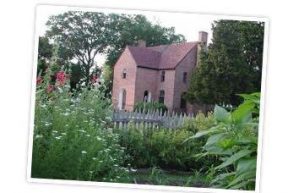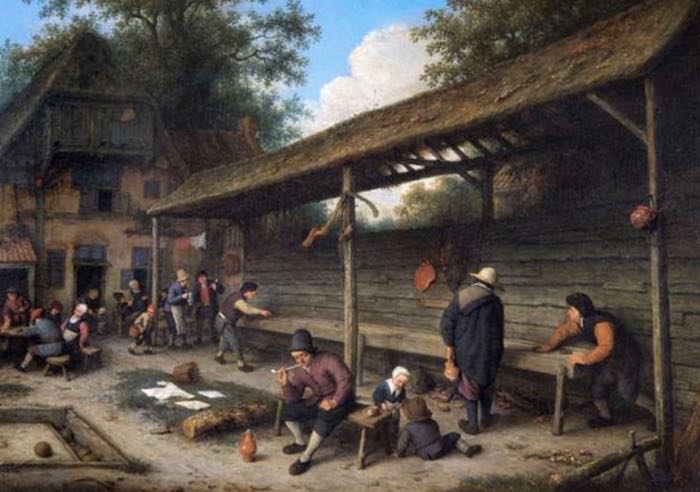WHY TRAVEL TO HISTORIC ST. MARY’S CITY MD SHOULD BE ON YOUR TO DO LIST
 Woven on the fabrics of history, St. Mary’s City MD is an extremely unique tourist destination with an alluring scenery on offer. In St. Mary’s City, the very earth underneath your feet holds a story and each corner you turn will open another segment. Whether you are here for leisure, archeology or education, you may begin to wonder what makes St. Mary’s City MD so unique. Here are some reasons why a travel to this historic city should be added to your bucket list.
Woven on the fabrics of history, St. Mary’s City MD is an extremely unique tourist destination with an alluring scenery on offer. In St. Mary’s City, the very earth underneath your feet holds a story and each corner you turn will open another segment. Whether you are here for leisure, archeology or education, you may begin to wonder what makes St. Mary’s City MD so unique. Here are some reasons why a travel to this historic city should be added to your bucket list.
- St. Mary’s City MD is Maryland’s first capital and origin of American religious tolerance.
Memorable St. Mary’s City is a charming, waterfront village, and not in light of it’s location between the homesteads of Southern Maryland and the excellent St. Mary’s River. Established in 1634, the Maryland state was established as a spot where English Catholics could get away from strict oppression. Visit the remade structures, including the flawless, block statehouse that once filled in as the capital of the settlement.
- Boarding the tall-ship Dove
Looking at the Dove from the riverfront precipices over, it’s difficult to envision moving on board and heading out for an obscure new world. Strolling the decks of the Dove, a reproduction of the first which, alongside a bigger boat, the Arc, carried the primary Marylanders to about 400 years prior, brings another thankfulness for the fortitude of those valiant pioneers. A voyage through this pleased little boat is a genuine window through time, and your children will believe it’s a privateer transport.
In seventeenth century Maryland, travel was a need for correspondence and exchange, and water transportation was the best or just decision. At Historic St. Mary’s City waterfront, guests can climb installed the Maryland Dove,chat with the boat’s team, and gain proficiency with the hardships and advantages of life on board an exchanging vessel. Find how mariners explored by the stars, what they ate during a long journey, and how conduits connected Maryland’s homesteaders to the remainder of the world.
The Maryland Dove is a re-production of a late seventeenth century vessel celebrating the Dove of 1634, which went with Lord Baltimore’s unique endeavor to Maryland. A couple of times every year the Maryland Dove ventures from St. Mary’s City for outreach visits to different ports.
- Dynamic archeological exploration
In Historic St. Mary’s City, the ground underneath your feet is a fortune trove; and neighboring St. Mary’s College of Maryland is an innovator in pioneer prehistoric studies. A voyage through St. Mary’s City isn’t only an approach to find out about our history, it’s likewise an entrancing window into the science we use to reveal that history.
- Experience the past with living students of history
Blend with customary ranchers and traders, meet legacy livestock, and experience what life resembled on a manor in 1635. The living history specialists of St. Mary’s carry a degree of authenticity to this remade town unparalleled anyplace in the frontier world.
- Appreciate the hospitality of St. Mary’s City MD.
If you do the honor of paying a visit to this town, you will obviously need hospitality but do not frett, The Inn at Brome Howard has got you covered. Cozy rooms and top notch food make the Inn at Brome Howard, situated on the grounds of Historic St. Mary’s City, the ideal end of the week escape.
Go through your evenings unwinding in comfort at the beguiling, 1840s motel. Look over three private rooms and a twofold room suite, all flawlessly embellished and sumptuously delegated.
Appreciate new takes on Southern Maryland works of art at the Inn at Brome Howard, administration by Expressions of St. Mary’s. Reserve propelled spot for your gathering of up to 55 and eat in style at the Inn’s wonderful eating salon. Or on the other hand, come every month for an uncommon themed wine blending supper, highlighting dazzling wines combined expertly with a heavenly menu. Searching for something else? They likewise have High Tea month to month!
Make your end of the week escape noteworthy! Remain at the Inn, appreciate a colonial breakfast and investigate the seventeenth century at Historic St. Mary’s City.
Encompassed by fields and woods on the banks of the St. Mary’s River, the nineteenth Century Inn at Brome Howard is the ideal retreat for weddings and other extraordinary occasions. With full coordination all the way, you can be guaranteed your occasion will be great.
To reserve your spot, visit Bromehoward.com or call (240)434-3209/(301)866-0656
References
- “St. Mary’s County, Maryland: Historical Chronology”, Maryland Manual Online, Maryland State Archives, Government of the State of Maryland.
http://msa.maryland.gov/msa/mdmanual/36loc/sm/chron/html/smchron.html
- “Historic St. Mary’s City”, https://oldsite.hsmcdigshistory.org/
- “The Inn at Brome Howard”, https://bromehoward.com/
- https://www.visitstmarysmd.com/see-do/detail/historic-st-marys-city
AFTER READING THIS ARTICLE OTHERS READ:
Vacation in Historic St. Marys



 Woven on the fabrics of history, St. Mary’s City MD is an extremely unique tourist destination with an alluring scenery on offer. In St. Mary’s City, the very earth underneath your feet holds a story and each corner you turn will open another segment. Whether you are here for leisure, archeology or education, you may begin to wonder what makes St. Mary’s City MD so unique. Here are some reasons why a travel to this historic city should be added to your bucket list.
Woven on the fabrics of history, St. Mary’s City MD is an extremely unique tourist destination with an alluring scenery on offer. In St. Mary’s City, the very earth underneath your feet holds a story and each corner you turn will open another segment. Whether you are here for leisure, archeology or education, you may begin to wonder what makes St. Mary’s City MD so unique. Here are some reasons why a travel to this historic city should be added to your bucket list.